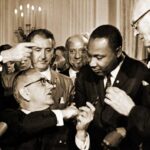Origin and Family: Valerie Thomas was born on February 8, 1943, in Maryland, USA. Growing up in the midst of societal changes and the civil rights movement, she developed a keen interest in science and technology from a young age. Valerie’s childhood was marked by curiosity and a determination to defy gender and racial stereotypes prevalent in her era.
Valerie Thomas came from a family that encouraged education and intellectual pursuits. Her early exposure to her father’s work as a technician at the Goddard Space Flight Center sparked her fascination with science and set the stage for her groundbreaking career.
Education and Early Career: Thomas attended Morgan State University, a historically black university in Baltimore, where she earned a degree in physics in 1964. Following her graduation, she joined NASA’s Goddard Space Flight Center, where she embarked on a remarkable journey that would see her become a pioneer in the field of optics and imaging.
Inventions and Contributions: Valerie Thomas is best known for her invention of the Illusion Transmitter, an early form of 3D technology. In 1980, she patented this groundbreaking invention, which utilized concave mirrors to create the illusion of a three-dimensional optical effect. Her innovation laid the groundwork for advancements in medical imaging, television, and virtual reality.
Beyond her notable invention, Thomas made significant contributions to the Landsat program, a series of Earth-observing satellite missions. Her work in image data processing and analysis played a crucial role in enhancing the quality and usefulness of satellite imagery.
Accomplishments and Awards: Valerie Thomas’s remarkable career has been recognized with numerous accolades. In 1976, she received the NASA Equal Opportunity Medal for her efforts in promoting equal opportunities within the organization. Her dedication to excellence and innovation earned her the NASA Goddard Space Flight Center Award of Merit in 1980.
Thomas’s impact extends beyond her inventions; she has been an advocate for diversity in STEM fields and an inspiration for aspiring scientists and engineers, especially women and people of color.
Legacy: Valerie Thomas’s legacy is firmly rooted in her groundbreaking contributions to optics and imaging. Her Illusion Transmitter laid the groundwork for advancements in visual technology, impacting fields ranging from entertainment to medical imaging. Furthermore, her advocacy for diversity and inclusion in STEM fields has inspired generations of underrepresented individuals to pursue careers in science and technology.
Fun Facts:
- Valerie Thomas was a strong advocate for STEM education, often engaging in outreach programs to inspire young minds to pursue careers in science and technology.
- Her work in the Landsat program contributed to advancements in satellite imagery, which has been crucial for environmental monitoring, agriculture, and urban planning.
- Despite facing challenges as a woman of color in a predominantly male field during the 1960s and 1970s, Valerie Thomas’s perseverance and intellect broke barriers and paved the way for future generations.
In conclusion, Valerie Thomas’s journey from a curious child in Maryland to a pioneering inventor and advocate reflects a commitment to pushing boundaries and challenging stereotypes. Her contributions to science and dedication to promoting diversity in STEM make her a trailblazer whose impact continues to resonate in the world of technology and beyond.





